The abridged translation of this paper, which will be presented at the conference in November 2021 in Belgrade, has been posted here to enable conference participants to submit questions to the speaker beforehand. The translation has been financed by the Fund to Assistance to the Russian Church Abroad.
Those who served the Church conducted baptisms, confessions, and funerals. The Church accompanied a person in joys and sorrows “of this temporary life,” whose dates can be read on the gravestones of the Russian section of the New Belgrade Cemetery. “This whole place is permeated by Russian soil, Russian sorrow, and Russian tears.” In the altar of the Iveron Chapel there is box with Russian soil instead of relics. [1]Archpriest B. Tarasjev, Chuvati sedanie o onime koji su otishli // Rusi bez Rusije Srpski Rusi [Preserving the Heritage of Those Who Have Left Us // Russians Without Russia. Serbian Russians] … Continue reading
Now the old cemetery with a number of rickety crosses and monuments and faded walls in the chapel has been put in a “European” condition by help from Russia. The monuments are identical, the paths have been cleared, and there is a little sign regarding the restoration of this cemetery. This might be better, but the feeling that one experiences now is brought down by the standardization of culture in this sad sphere.
The main thing was to preserve the church in a person’s heart, raise children in Orthodoxy, love for the native land, for ancestors, and the Slavic heritage. Much of this depended on the schools and on the teachers. And everywher909e, regardless of the type of educational institution, work was being done under the slogan, “true enlightenment unites mental and moral education.”
Fr. Vladislav Nekliudov, a priest with a tragic fate, taught at the Russo-Serbian Gymnasium in Belgrade. The recollections about him contain the following lines: “We children, and then teenagers and youths were won over and disarmed by his inoffensiveness and truly Christian humility. He was the incarnation of kindness and in some way was reminiscent of the Elder Zosimas. He had been in the military and went through the First World War and the Civil War. He graduated from the theological academy (the Theological Department of Belgrade University — V. K.) and became a priest according to his calling. He liked us young people and we were attracted to him. He understood us and always came up with the necessary words to support us at a difficult moment. His lessons, which were more like discussions, were always lively and interesting. He would hear out and dispel our doubts and objections patiently and with unchanging benevolence, citing examples from our lives and sharing his rich experience of a lifetime. We would go to him for confession with spiritual trembling and would come out calmed and purified. His words were particularly convincing since he confirmed them by his entire life.” [2]V. Molchanov, Zhivaia letopis’// Russko-Serbskaia gimnaziia. Pamiatka. Belgrad 1920-1944 [A Living Chronicle// First Russo-Serbian High School Commemorative Booklet. Belgrade 1920-1944] (New … Continue reading
The personality of Fr. Georges Florovsky became firmly ingrained in the memory of the young people of the time. “The Flying Dutchman” — such was the nickname the students gave him, seeing him constantly walking around in a Greek riasa with billowing sleeves — was beloved by many of his pupils. Few are aware that Fr. Georges had a second nickname — Pinocchio. It must be admitted, however, that he was a rather “difficult” instructor for those lacking lofty spiritual needs. His “soarings” in front of unprepared listeners would often leave them in depressingly timid bewilderment. Nonetheless, he was not a “holy terror” for the students, who were sometimes capable of mischievous escapades. [3] The author’s archive// The record of the reminiscences of A. V. Tarasiev.
The clergy strove to hand over all of the wealth, words, and deeds, accumulated by Christianity, to its “children.” But the clergy was not free from the attack itself.
There were plenty of complications in the perception of Russia.
Hieromonk John (Maximovich) said, in his homily at his consecration as Bishop of Shanghai. “Even beyond the Russian borders, we do not cease being its sons. Expelled from our earthly fatherland, we continue being the spiritual flock of Saints Peter, Alexis, Jonah, Filipp, and Hermogenes. We remain as part of the suffering and persecuted Russian Church, bathed in the blood of the martyred bishops Vladimir of Kiev, Benjamin of Petrograd, Hermogenes of Tobolsk, Metrophanes of Astrakhan, Andronik of Perm, and a countless multitude of other new martyred clergy and laity. Their behests are our holy treasure, which we must preserve until God deigns to manifest his power and exalt the horn of Orthodox Christians. And until then we must dwell in spiritual unity with the persecuted, strengthening them with prayer.” [4] Cited in Pravoslavnaia Rus’ (1995:11), 3.
The names of the hierarchs who returned to the Moscow Patriarchate are known, as well as those of the ones who remained loyal to the behests of Their Preeminences Anthony and Anastasy, who regarded the Russian Orthodox Church to be not free of the Bolsheviks’ power.
In essence, the entire church and social life of the Russian emigration in Yugoslavia of the prewar period can be characterized by the prevalence of political principles over spiritual ones within it.
On April 6, 1941, German planes bombed the Yugoslav capital.
However, in these tragic days for Yugoslavia of enemy incursion, the Russian hierarchs took the side of observers. Such behavior can be explained only by the fact that many emigrés continued seeing Hitler as a liberator of their native land. And it seemed that their hopes were being fulfilled. On June 22, the Day of All Saints Who Shone Forth in Russia, Germany again attacked Russia.
Anti-Communist powers were convinced that each extra day of Stalinist rule was killing the soul of the Russian people, who, without external interference — war between Germany and the USSR — would not be able to get rid of the hated regime. They were even convinced that Hitler would not be able to gain victory without the help of the Russian people and that the fates of Russia and Germany depended upon the solution of the “Russian problem.” In this situation, in their view, the emigration’s task amounted to being with the Russian people and doing everything to form a Russian national armed force. [5] Cited in Russkii Korpus na Balkanakh vo vremia II Velikoi voiny, 1941-1945 {The Russian Corps in the Balkans during the Second World War, 1941-1945], (New York: 1963) 13.
The leaders of the Russian Orthodox Church Outside Russia were themselves in no rush to come out with widely broadcasted announcements. We know that Metropolitan Anastasy (Gribanovsky), In spite of the threat of being interred, did not wish to address the Russian people with a call to cooperate with the German Army, motivating his refusal by the fact that Russian patriots do not know the aims and tasks of the Germans in Russia. [6] See Pravoslavnaia Rus’, (1985:8), 32.
But Vladyko’s reservation meant no change in his views on Communist ideology. “This war,” Maevsky wrote, was regarded as a struggle to liquidate Bolshevism, while the Russian people had to live through an unheard of trial as payment for destroying its historic past, for becoming involved with political and social fantasies. In this case the Russian emigration found itself in an exclusively difficult situation. It would have welcomed the destruction of the Soviet Carthage, but it was experiencing Russian sorrow and Russian ravages. In these tragic circumstances Metropolitan Anastasy served a moleben to all saints for the salvation of Russia before the miraculous Kursk Root Icon in the Holy Trinity Church. [7] Maevsky, op. cit., 277-278.
What kind of Russia? This question can be and must be posed. There was only one answer — Russia without the Bolsheviks. On September 12, 1941 the Separate Russian Corps was formed. As in the tsar’s army, the corps had its own church, consecrated by Metropolitan Anastasy and chaplains. Archpriest John Gandurin was appointed as its first chaplain. Fr. Anthony Medvedev, Fr. Vladimir Uliantsev, Fr. Boris Molchanov, Fr. Nikon Rklitsky, Fr. Nikodim Nechaev, Fr. Gregory Barannikov, and Fr. Vladimir Mogilev performed their duties in the regiments. [8] See Russkii Korpus na Balkanakh, 39-380.
The episode connected to the Croatian Orthodox Church (1942) can serve as a clear example. One of the first measures taken in Zagreb was the ban on any activity by the Serbian Orthodox Church and those serving in it on Croatian territory, which was accompanied by frequent arrests of priests, church closures, and appropriation of all church property. Frightening events took place as well. The horrible Jasenovac Camp was operating in the country, in which many Serbs were tortured to death. Russian priests also perished.
Assigning a Serb to head the Church in Croatia was out of the question, so it was decided to draw Russian hierarchs, whose advanced age gave grounds for hope that there wouldn’t be great problems with them. The first candidate was the aged Archbishop Hermogenes (Maximov), who was residing in 1941 at Khopovo Women’s Monastery in Croatian territory. The Russian nuns from the Lesna Monastery had their refuge there at one point.
Sturmbanfuhrer H. Helm, R. Heidrich’s representative in Zagreb, wrote to Berlin on June 9, 1942, that Hermogenes was willing to take the position of patriarch of the new church even without the consent of the head of the Russian Orthodox Church Outside Russia (ROCOR), Metropolitan Anastasy (Gribanovsky). [9] HDA, RSUP SDB. F. 1561. Kutija 002. No. 7 L. 161-162.
However, the question of canonicity was of little worry to the Croatian authorities, or to Hermogenes himself, who, I repeat, was under governmental control. The head of the Croatian Orthodox Church himself later emphasized at his investigation that he had fulfilled all of the directives of the Croatian authorities and ordered his subordinates to carry them out. By the same token “the Croatian Orthodox Church submitted to the orders and wishes of the authorities in everything.” [10] J. Kristo, Katolicka crkva I Nezavisima drzava Hrvatska 1941-1945 (Zagreb: 1998), 42. In particular, Vladyka had to sign, under the threat of internment, a protest prepared for the press on behalf of the clergy and the faithful against the election of Patriarch Alexis of Moscow. [11] Ibid., 44.
In 1942 there were seventy priests in the Croatian Orthodox Church. Among them were many with Russian surnames, such as Vladimir Sokolov, Basil Dobronravov, Basil Yurchenko, Nicholas Semchenko, Dmitri Mrikhin, Benjamin Pavlovsky, Paul Kozarsky, Dmitri Izvolsky, Michael Milogradsky, Seraphim Kupchevsky, Lucian (Andreevsky), Anatole Paradiev, Alexander Volkovsky, Platon (Bondar), Diomedes Kashchenko, Eugene Pogoretsky, Nicholas (Ruzhentsov), John Mrachinsky, Sergei Selivanovsky, Vsevolod Horvat, Andrew Semilutsky, Alexis Kryzhko, Nestor Brebakov, Cesar Kochenko, Nicanor Kalik, and Michael Pesotsky. [12] V. Dzhurii, Ustashe i pravoslavlie Hrvatska pravoslavna tsrkva [The Ustashe and Orthodoxy in the Croatian Orthodox Church] (Belgrade: 1989), 87.
To live through these events, to wait through them, and to be saved — such was the task that lay before many of the clergy. It stands to reason that being Russian guaranteed certain advantages, although not always. In this situation, the activity of the metropolitan himself consisted of making decisions regarding the assignment of priests with the consent of the Ministry of Justice and Religion, and interceding for his flock before the authorities. As far as the priests’ attitude toward Hermogenes was concerned, some of them were devoted to their leader, while others were against him as a Russian. [13] See: HDA, RSUP SDB, F. 1561. kutija 002. No. 7. L. 96.
The actual attitude of the population toward the Croatian Orthodox Church and its leader was, I would say, one of indifference, even wariness, since the partisan movement that had developed in that country regarded the new church as its enemy, supporting the Ustashe regime.
I will add that the partisans in Bosnia and Herzegovina in their letter to him, promised him, already in 1943, a people’s trial, as “a traitor and betrayer of the Serbs” when they would come to Zagreb. [14] HDA, RSUP SDB L. 134.
On May 8, 1945, Zagreb was occupied by units of the Yugoslav People’s Army, and Hermogenes was arrested. But Vladyka did not lack courage. At his May 26 interrogation he testified that he could have left Zagreb, since a car was available to him that was supposed to get him to a train. However, he “decided to stay, since he didn’t feel he was guilty.” [15] HDA, RSUP SDB l. 43. But to the new liberators, he was guilty. The Department of People’s Defense requested that the military tribunal in Zagreb conduct a trial of Hermogenes Maximov and a number of figures in the Croatian Orthodox Church, who, at it said in the accusation, “bear responsibility for the anti-people activity of the Ustashe Orthodox Church and for all the favors which that church accorded the Ustashe Movement.” [16] HDA, RSUP SDB L. 51.
On June 9, 1945 the Zagreb military tribunal sentenced the 58 accused, among whom 43 were to be shot, six to be hung, and nine to periods of incarceration. The entire sentence took not quite eighteen pages. It basically included clergy — Hermogenes (Maximov), Dimitri Mrikhin, Seraphim Kupchevsky, Alexei Borisov, [17]See V. I. Kosik, Horvatskaia pravoslavnaia tserkov’ (ot organizatsii do likvidatsii) (1942-1945) vzgliad na XXI vek [The Croatian Orthodox Church (from its organization to its liquidation) … Continue reading who along with others were sentenced to the highest degree of punishment.
It is not known where the head of the Croatian Orthodox Church is buried, but one of the Zagreb cemeteries, specifically the Miroshevc Cemetery, has a cenotaph in memory of those who perished.
In 1945 the Russian Orthodox people in Yugoslavia were reunited with the Moscow Patriarchate. An appropriate moleben was served in the Holy Trinity Church with the sprinkling of holy water of the church and all parishioners. [18] Author’s archive, Zapis‘ vospominanii Taras‘eva A. V. [A Record of A. v. Tarasiev’s reminiscences].
The victory if the Soviet/Russian forces became a milestone for the Russian emigration and for the clergy.
In 1948 difficult times came for everyone who in any way was connected to Moscow. Clergy fates varied — some awaited deportation, others prison, and still others death.
In 1949 Fr. Vladislav Nekliudov wrote Professor L. N. Pariisky, whom he met when the latter came to Belgrade as part of a church delegation in 1946, “In general, for Russians here, and especially for Soviet citizens, things are becoming increasingly harder… In connection with the Cominformburo Resolution (on June 29, 1948 Pravda announced the expulsion of the Yugoslav Communist Party from the Cominformburo. which the Kremlin had created to coordinate the activity of national Communist Parties in 1947. Stalin broke with Tito, who refused to “obey” Moscow.) local authorities started regarding all Soviet citizens as suspect, suspecting them of political unreliability and even of spying. Many lost their jobs or pensions, and very many totally innocent people were arrested… On May 11 a Russian archpriest was arrested in Sarajevo, who was rector of a church under Fr. John Sokal as dean. It seems that he had received an exit visa to the USSR, and, summoned to Belgrade, he went to get permission. As “foreigners’ we are now not able to move without special permission in each case. He filled out a form in which he wrote that he will be going at the behest of the Soviet consulate, which caused displeasure. They came to him that evening, conducted a thorough search, taking his typewriter, radio, camera, and everything he had on hand from the church treasury, as well as himself, of course, and put him in jail, where he remains without contact to this day. His name is Fr. Alexis Kryzhko… He wrote that he was especially afraid that at the last minute, when the visa that he had been so hungrily awaiting would arrive, he would be jailed and the trip would be called off. Apparently, that’s what happened.” [19] GARF. F 6991. Op. 1 D. 580. L. 49. In the upshot the People’s Court sentenced Fr. Alexis for spying to eleven years years of imprisonment. Fr. Vladimir Rodzianko, who was with him in prison in 1952 wrote Patriarch Alexis I that Fr. Alexis asked him to convey the following to everyone: ”Tell them there that it is all slander and that I was never any sort of spy, but simply wished to be true to my Church, flock, and native land.” [20] GARF. F 6991 Op. 1 D. 991. L. 4.
And there was yet another victim of Stalin’s break with Tito — the Priest Vladislav Nekliudov.
He was arrested, most likely, in the summer of 1949, accused of the intention, at Fr. Alexis’ request, to appeal to the Soviet Consulate, which could have interceded before the Yugoslav authorities for the innocent arrestees in Sarajevo. As Fr. John Sokal wrote to Metropolitan Nikolai (Yarushevich) “this request qualifies as espionage and both of them are in great danger for this.” [21] GARF. F.6991. Op. 1 D. 580. L. 71.
On December 9 Fr. John Sokal informed the Metropolitan of Krutitsa that “Fr. Vladislav perished on the night of November 29. This happened on the eve of his Sarajevo trial, where he was transferred from the Belgrade jail… He perished exclusively due to his honesty and trustfulness. It is understandable that such a person wasn’t brought to trial. He was courageous, steadfast, and fearless, loved his native land and remained loyal to it till the end. His conscience was clear, and so he didn’t fear death.” [22] GARF. F. 6991. Op. 1. D, 580. L. 75. (According to other information he perished in the Belgrade jail). [23] GARF. F. 6991, Op. 1. D. 737. L. 5.
Another fate befell Archimandrite Anthony (Bartoshevich), who was awaiting permission to leave for the USSR.
The Patriarchate kept silence for years. In this situation he decided to leave Yugoslavia for good, and went to Switzerland in 1949. The Moscow Patriarchate cannot be blamed for this, since the right to make decisions was not in its hands but in that of the Council on Religious Matters at the USSR in the Ministers’ Council. Fr. Anthony served in parishes in France, Belgium, Holland, and Luxembourg. He was consecrated to the episcopacy in 1957 and has been Archbishop of Geneva and Western Europe since 1965. He is a member of the Ikona Society, which was founded in Paris on June 24, 1927 by V. P. Riabushinsky.
The family of Fr. John Sokal, rector of Holy Trinity Church in Belgrade, was ready to leave at any moment. However, the appropriate agencies were in no hurry to do the right thing. A desperate cry to Nikolai for help followed. This appeal was successful in the end. The visa was received and Fr. John arrived in Russia with his family and soon was appointed dean of the Saratov Seminary.
In this situation all of the cares of the church and its flock lay on the shoulders of Fr. Vitaly Tarasiev, and then of his son Basil. Born in 1932, he graduated from the theological department of Belgrade University and took care of Russian graves in Yugoslav cemeteries. Like his father before him, he baptized, conducted weddings, heard confessions, and strengthened people’s faith. I remember him always rushing someplace, preoccupied by a stream of unfinished matters, which were constantly on the increase due to his readiness to serve. He died in 1996 and was buried next to his father by the north wall of Holy Trinity Church, whose distinctive foundation was Russian soil that had been brought by refugees for dying and living memory. And now a third representative of the Tarasiev family is laboring at that church, ministering to his Orthodox flock.
So it turns out that the fates of the Russian clergy were rather variegated, which was conditioned, first of all, by the very life outside Russia and the problem of making a choice that it brought about. The only constant I can offer here is its activity in the field of Orthodoxy.
LINKS
Viktor Iv. Kosik, “Meet the author of “The Russian Church Diaspora in the Biographies of Its Clergy from America to Japan”
References
| ↵1 | Archpriest B. Tarasjev, Chuvati sedanie o onime koji su otishli // Rusi bez Rusije Srpski Rusi [Preserving the Heritage of Those Who Have Left Us // Russians Without Russia. Serbian Russians] (Belgrade, 1994), 353. |
|---|---|
| ↵2 | V. Molchanov, Zhivaia letopis’// Russko-Serbskaia gimnaziia. Pamiatka. Belgrad 1920-1944 [A Living Chronicle// First Russo-Serbian High School Commemorative Booklet. Belgrade 1920-1944] (New York-Washington-San Francisco-Caracas-Buenos Aires, 1986), 170. |
| ↵3 | The author’s archive// The record of the reminiscences of A. V. Tarasiev. |
| ↵4 | Cited in Pravoslavnaia Rus’ (1995:11), 3. |
| ↵5 | Cited in Russkii Korpus na Balkanakh vo vremia II Velikoi voiny, 1941-1945 {The Russian Corps in the Balkans during the Second World War, 1941-1945], (New York: 1963) 13. |
| ↵6 | See Pravoslavnaia Rus’, (1985:8), 32. |
| ↵7 | Maevsky, op. cit., 277-278. |
| ↵8 | See Russkii Korpus na Balkanakh, 39-380. |
| ↵9 | HDA, RSUP SDB. F. 1561. Kutija 002. No. 7 L. 161-162. |
| ↵10 | J. Kristo, Katolicka crkva I Nezavisima drzava Hrvatska 1941-1945 (Zagreb: 1998), 42. |
| ↵11 | Ibid., 44. |
| ↵12 | V. Dzhurii, Ustashe i pravoslavlie Hrvatska pravoslavna tsrkva [The Ustashe and Orthodoxy in the Croatian Orthodox Church] (Belgrade: 1989), 87. |
| ↵13 | See: HDA, RSUP SDB, F. 1561. kutija 002. No. 7. L. 96. |
| ↵14 | HDA, RSUP SDB L. 134. |
| ↵15 | HDA, RSUP SDB l. 43. |
| ↵16 | HDA, RSUP SDB L. 51. |
| ↵17 | See V. I. Kosik, Horvatskaia pravoslavnaia tserkov’ (ot organizatsii do likvidatsii) (1942-1945) vzgliad na XXI vek [The Croatian Orthodox Church (from its organization to its liquidation) (1942-1945)]. |
| ↵18 | Author’s archive, Zapis‘ vospominanii Taras‘eva A. V. [A Record of A. v. Tarasiev’s reminiscences]. |
| ↵19 | GARF. F 6991. Op. 1 D. 580. L. 49. |
| ↵20 | GARF. F 6991 Op. 1 D. 991. L. 4. |
| ↵21 | GARF. F.6991. Op. 1 D. 580. L. 71. |
| ↵22 | GARF. F. 6991. Op. 1. D, 580. L. 75. |
| ↵23 | GARF. F. 6991, Op. 1. D. 737. L. 5. |

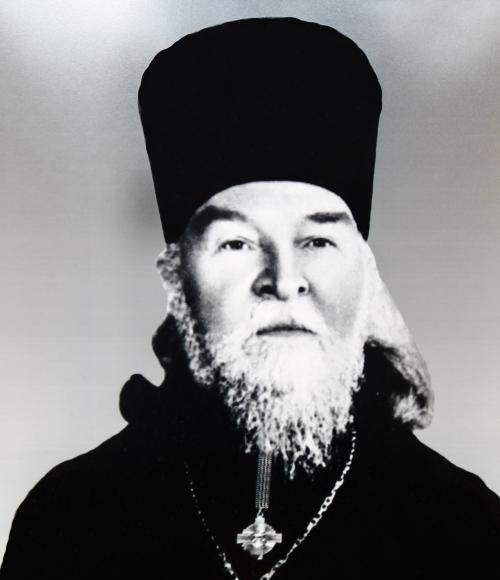


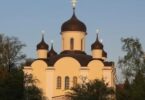

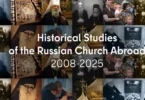
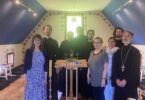
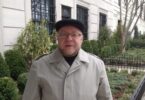
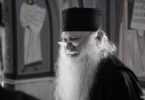

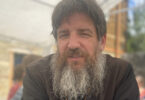
In essence, the entire church and social life of the ROCOR during this current Ukrainian “Special Operation”/Invasion can be characterized by the prevalence of political principles over spiritual ones within it.
In these tragic days for Ukraine of enemy incursion, the ROCOR hierarchs took the side of the invaders. Such behavior can be explained only by the fact that many emigrés see Putin as a “liberator” of what they have claim as their own native “Rus” land. And it seemed that their hopes were being fulfilled. On February 24, 2022, during the Week of the Prodigal Son, Russia attacked Ukraine.